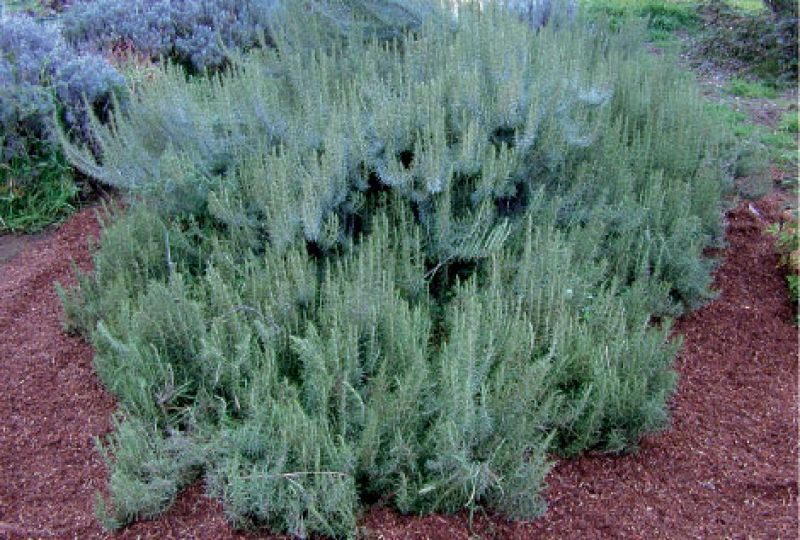
Deck the halls this holiday with rosemary (Rosmarinus officinalis), a versatile herb that provides an easy filler for festive centerpieces, wreaths, and garlands. Symbolizing love, happiness, and remembrance, the low-maintenance, Mediterranean native is a water-wise, sun-loving, and salt-tolerant perennial that thrives in full sun and dry heat.
Rosemary delivers fragrant, evergreen foliage to the landscape and will add a depth of flavor when used—fresh or dried—in a favorite dish. (The herb has also been said to encourage good circulation and memory.) For planting in our humid climate, select a site that receives plenty of air circulation and has good drainage. Rosemary also loves to be planted in containers. This time of year, it is frequently sold as little Christmas-tree topiaries that can be directly planted in the ground or stepped up to a larger container as a focal point on a sunny patio for year-round enjoyment.
PINE-SCENTED (Rosmarinus officinalis ‘Angustifolius’)
Rosemary’s fragrance can vary just as much as the color of its bloom and its foliage habits. This variety, commonly referred to as “pine-scented,” has small leaves smelling of fresh pine on a bush that grows two to three feet tall. The aroma might be too strong for culinary use, but it’s ideal for adding to holiday decorations. Dark blue flowers appear in late winter to mid-spring.
"SALEM’
This variety displays a more upright growth habit, reaching up to five feet in height and four feet in width, making it a great candidate for being grown as a hedge or a topiary. Its narrow leaves and blue flowers are commonly used in cooking and sachets.
‘HUNTINGTON CARPET’
Looking for a rosemary plant that does not stand quite as tall? This trailing variety has glossy green leaves and sky-blue edible flowers. At maturity, it will reach two feet in height with a three-foot spread. Use it as a drought-tolerant ground cover, or plant it in a large container and let it cascade over the side to create a splash of delicate color.
Hardiness: Zones 8-10
Light: Full sun for 6-8 hours
Soil: Well-draining, sandy loam with a pH 6-7
Water: Let dry between waterings. Once established in landscape, water occasionally.
Fertilize: Slow-release, 14-14-14 fertilizer